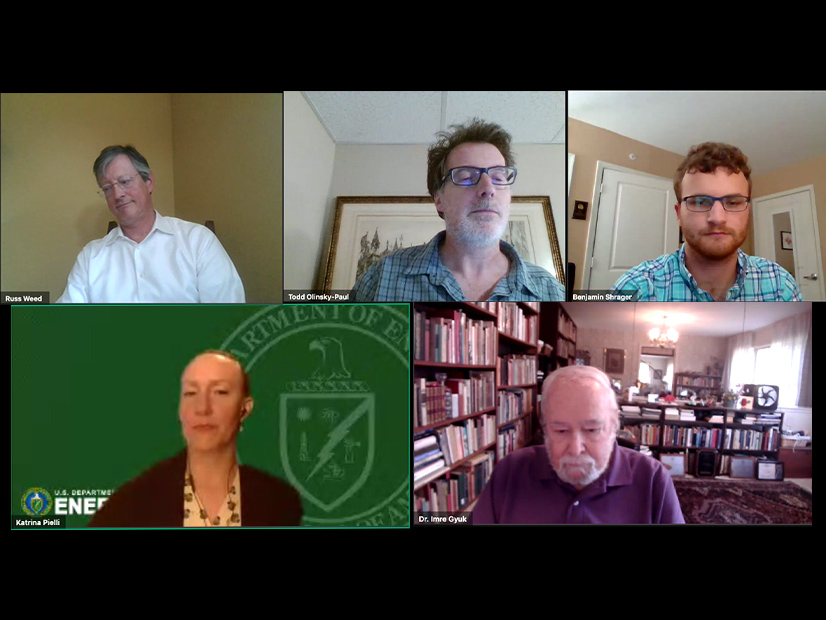
The Biden administration’s goal that the U.S. economy achieve net-zero carbon emissions by 2050 will require an investment of $300 billion a year until 2050, or $10 trillion in total, the U.S. Department of Energy estimates, including $21.5 billion to support large-scale clean energy demonstration projects.
Effectively allocating the $355 million in initial funding, authorized by last year’s Infrastructure Investment and Jobs Act, is the task now facing DOE, Katrina Pielli, senior policy adviser at the department’s Office of Energy Efficiency and Renewable Energy, said during a webinar Tuesday presented by the Clean Energy States Alliance with the DOE and the Sandia National Laboratories. The session drew several hundred spectators.
The department is taking time to develop “front-end planning” to help the industry develop storage projects that will be able to meet congressional expectation, Pielli said, adding that it is currently estimating it will begin accepting applications later this quarter.
“We’re maintaining a risk-balanced, defensible portfolio of investments. And what this means is that we will be reviewing project applications to ensure those selected for these demonstrations are viable at scale and they’re replicable. We want to scale down risk so we can scale up the clean energy technology deployment,” she said.
The agency will be making awards with 50-50 cost-sharing agreements, she added. “We’ll take early steps to set up these demonstrations, and our industry partners will assist with the steps that lead to commercialization and deployment,” she explained.
The law requires DOE to focus on rural areas with populations of less than 10,000, disadvantaged urban areas and former mining sites for potential projects.
“Congress did direct us to prioritize job creation, greenhouse gas emission reduction and the economic benefits for host communities. Here again, we’re working closely with our National Labs to understand the technical, regulatory and economic challenges associated with clean energy development on mined land,” Pielli said.
Dan Borneo, an engineering project leader at Sandia, said the goal is to reduce storage costs by 90% compared to the baseline cost for lithium-ion storage in 2020, to 5 cents/kWh, he said.
“For all the different storage technologies that are out there that could be used for grid storage, none of them currently meet a 5-cents/kWh levelized cost of storage. None of the technologies are there yet, which is why we need more investment and more demonstrations at scale,” he said.
“We are looking at targeting technologies in that realm with easy demonstration, all the way through more mature technologies that have already been proven, but may still need to be piloted in new or new regions that have not yet seen storage.”
Borneo said the lab will be funding demonstration storage programs for DOE and the Defense Department. “We’re looking at reasonably small behind-the-meter systems that can prove long-duration energy storage for a specific resilience application.”


